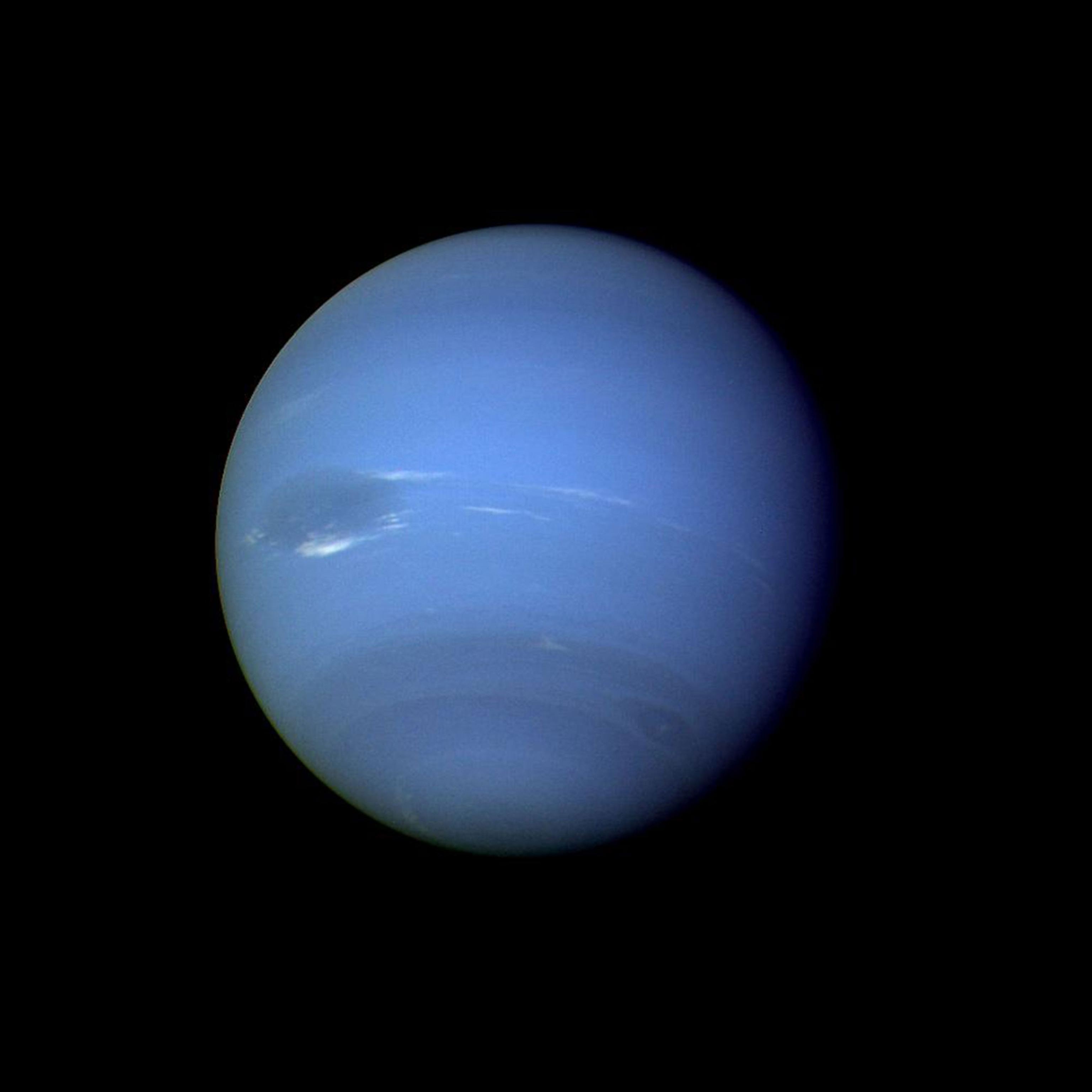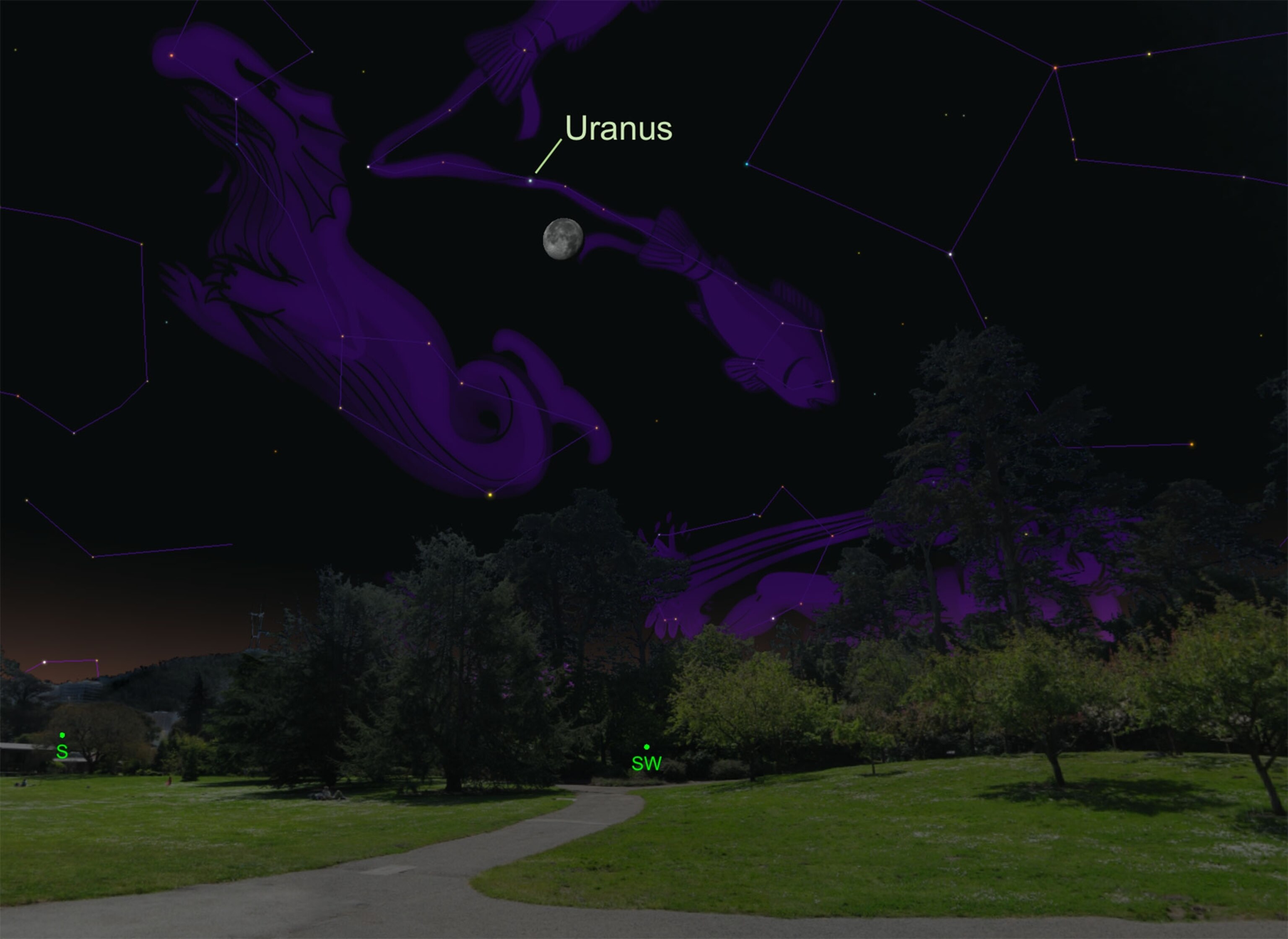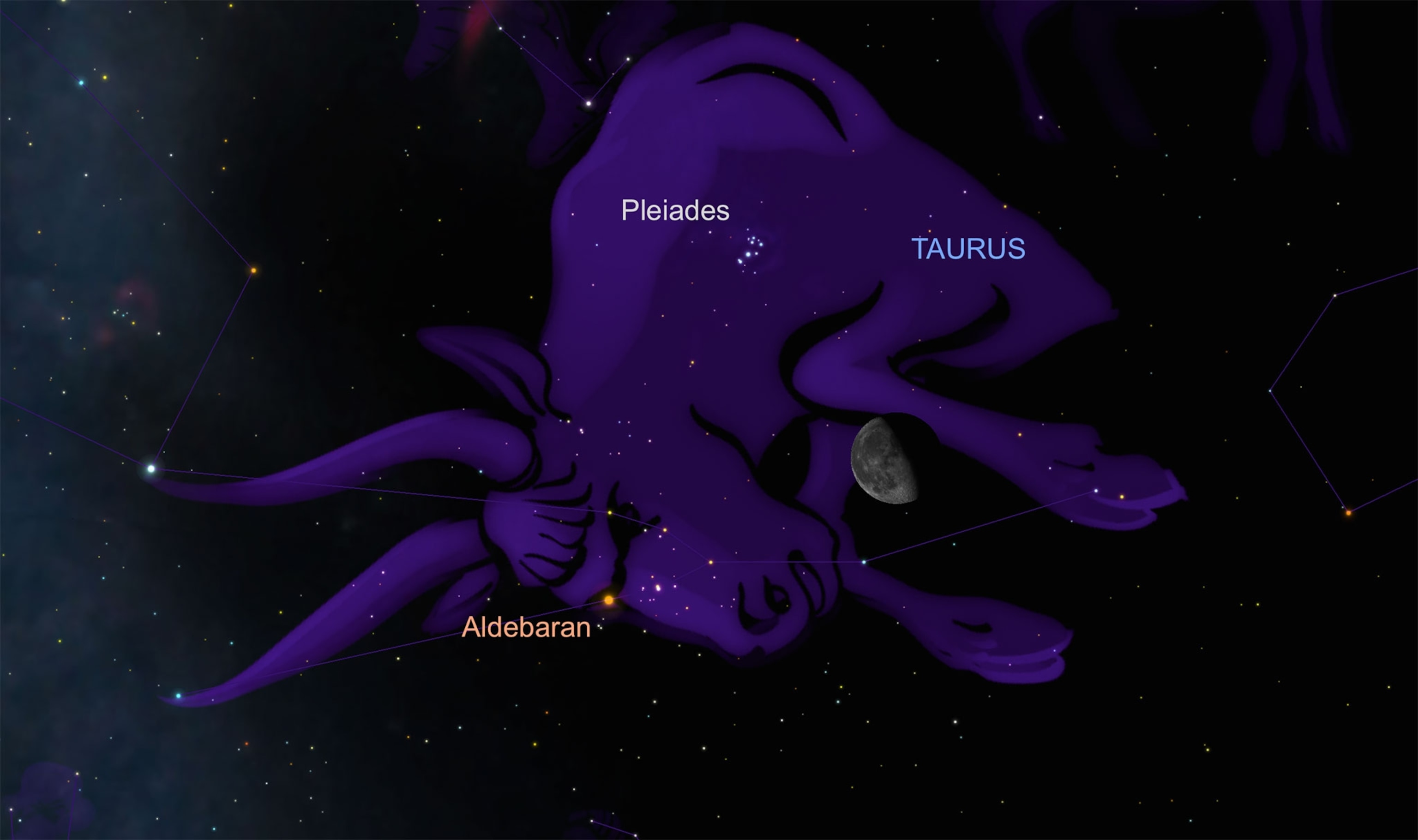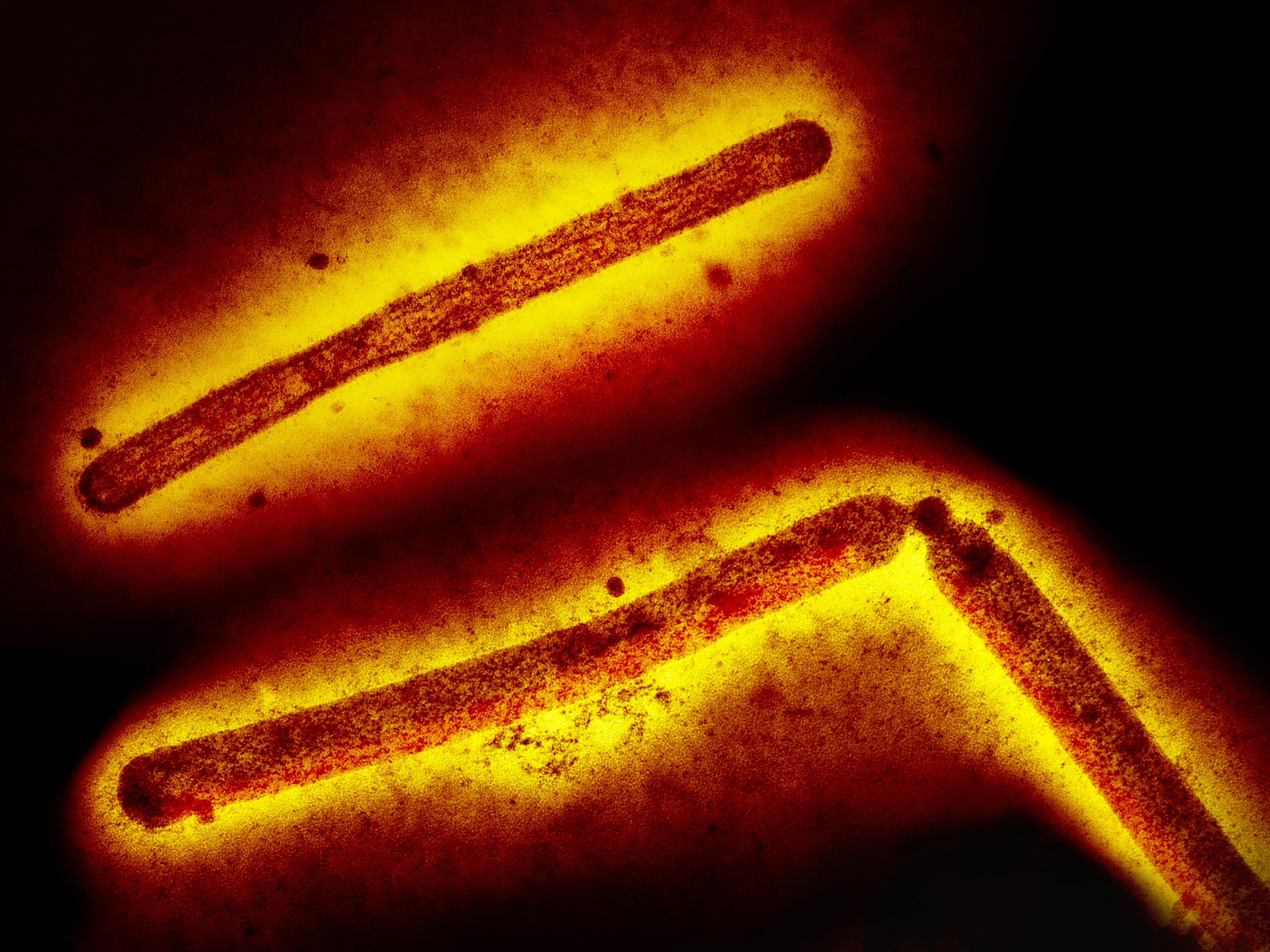
This Week's Night Sky: Best Time to Spot Distant Neptune
The moon points the way to Uranus and the Crab Nebula and makes a pretty pattern with a pair of objects in Taurus, the bull.
Neptune in prime time. On Monday, August 31, Neptune reaches opposition. That means the gas giant, the eighth and last major planet in the solar system, is opposite the sun in our sky, so it will be visible all night long. Opposition also marks the planet’s closest approach to Earth, which makes it brighter to our eyes than at any other time of the year.
Over the next few weeks, Neptune will be approximately 2.7 billion miles (4.3 billion kilometers) from Earth. That is so distant that sunlight reflected off its icy cloud tops takes nearly four hours to reach us.

Shining at magnitude 7.8, Neptune is best seen through mounted binoculars or a backyard telescope. Start looking for the ice giant in the southeast sky in the constellation Aquarius, the water-bearer. You’ll find Neptune is now sitting about 3 degrees southwest of the fourth-magnitude star Lambda Aquarii. Scan the constellation carefully and look for a tiny blue-gray disk to pop out against a background of faint pinpoint stars.
Green giant. In the southwest sky before local dawn on Tuesday, September 1, the waning gibbous moon points the way to the planet Uranus. The two very different solar system objects will be located in the constellation Pisces, the fishes, separated by only 5 degrees—equal to the width of your fist held at arm’s length.

The ice giant, shining at magnitude 5.7, is too faint to be seen with the naked eye, but it is a fairly easy target through binoculars, even from light-polluted suburbs. Use the moon as the starting point for your hunt and pan to its upper left within the same field of view. Uranus will shine with a distinct greenish tint.
Taurid trio. Early morning risers on Friday, September 4, can catch the moon forming a neat cosmic triangle high in the southeast skies with two stellar sights in the constellation Taurus, the bull.

The bright red eye of the bull, the star Aldebaran, will be just to the lower left of the moon while to the upper left will be the open star cluster, Pleiades. The glare of the moon will make the pair difficult to see, but binoculars will help you appreciate the beauty of this tight stellar grouping.
By Saturday morning, the moon will snuggle up to 67 light-year distant Aldebaran. Again, binoculars and telescopes will best show off this close encounter between two bright objects.

Crab Nebula. Before dawn on Sunday, September 6, the moon can help point the way to one of the brightest supernova remnants in the entire night sky, the Crab Nebula. That morning, the moon will still be in the Taurus constellation but will be hanging just below the naked-eye star Zeta Tauri, which marks the tip of one of the horns of the bull. Backyard telescopes trained just above the star should be able to spot the nebula.
It is simply awesome to ponder that the tiny fuzzy object in the eyepiece is a giant expanding cloud of gas lying some 6,300 light-years from Earth. The Crab Nebula is the remnant of an explosion of a massive star much larger than our sun, which Chinese astronomers recorded seeing in 1054 A.D.
Clear skies!
Follow Andrew Fazekas, the Night Sky Guy, on Twitter, Facebook, and his website.





